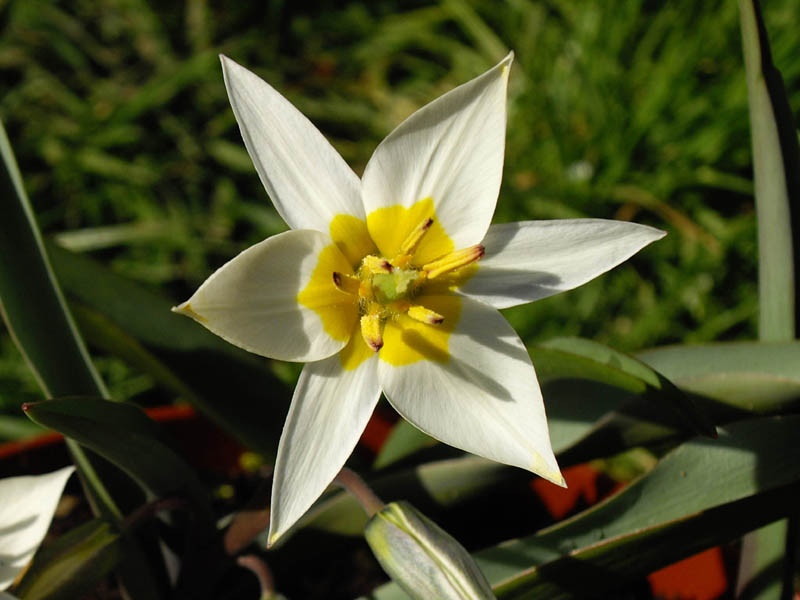Turkmenistan
Tulip
Tulipa

Ghislain118, CC-BY-SA-3.0,2.5,2.0,1.0
General Description / Cultural Significance
Tulips (Tulipa spp.), belonging to the Liliaceae family, are characterized by their upright growth, broad, parallel-veined leaves, and distinctive cup-shaped flowers, composed of multiple layers of petals. These perennial plants are remarkably adaptable, thriving in a wide range of soils, although they exhibit optimal growth in well-drained loam, particularly within hot and arid climates. Tulips are renowned for their ornamental value, exhibiting a broad spectrum of colors that can vary from pure white to deep purple, with the notable exception of true blue. This vibrant color variation can be further enhanced by variegation, a phenomenon often resulting from a benign viral infection transmitted by aphids and other insects.
The allure of tulips extends beyond their visual appeal; they also possess a delicate fragrance that combines notes of citrus, sweet honey, and fresh fruit, adding to their charm. Originating from the ancient landscapes of Persia, tulips spread across Central Asia, particularly to regions such as Turkmenistan, where they have been cultivated and revered for centuries. The cultural significance of tulips is deeply embedded in the folklore and traditions of these regions. In Persian culture, for instance, the multi-layered petals of tulips are often interpreted as symbols of perfect and enduring love. Moreover, tulips symbolize longevity and resilience, as individual plants can live and regenerate for up to 70 years if left undisturbed. This symbolic association with durability and beauty has led to the widespread depiction of tulips in various art forms, including ceramics, textiles, carpets, and illuminated manuscripts, serving as emblems of continuity and heritage.
Tulipa turkestanica, the Turkestan tulip, (pictured above) is a species of tulip native to Turkmenistan. It was first described by Eduard August von Regel in 1873.
Climate Change / Conservation Status
There are no tulip species on the IUCN Red List originating from these regions. However, the conservation status of tulips remains a topic of concern, particularly in the context of climate change. The specific threats to tulip populations are not yet fully understood or documented, particularly regarding the impacts of changing climatic conditions, shifts in animal feeding behaviors, and the detailed distribution patterns of tulip species. On a more anthropogenic level, the over-collection of tulips, driven by their high ornamental demand, poses a significant threat to their natural populations. Additionally, urbanization and mining activities, prevalent in regions where tulips naturally occur, have led to the destruction of tulip habitats, often requiring the excavation of large numbers of plants. The cumulative effects of these practices, especially when conducted on a large scale, could have long-term detrimental impacts on tulip biodiversity and the ecosystems they inhabit.
Given these concerns, there is an urgent need for comprehensive research and conservation efforts aimed at understanding and mitigating the impacts of both natural and human-induced threats to tulip populations. Such efforts should include detailed ecological studies, climate modeling, and the implementation of sustainable land-use practices to ensure the preservation of these culturally and ecologically significant plants for future generations.
Alternate Names
Tulipa
Sources
Montgomery, Missy. Tulips, NDSU, www.ndsu.edu/pubweb/chiwonlee/plsc211/student%20papers/articles00/mmontgomery/mmontgomery.htm#:~:text=Tulips%20are%20erect%20flowers%20with,to%20the%20plants%20by%20aphids. Accessed 26 Aug. 2024.
Permanent Mission of Turkmenistan to the United Nations. This statement can be found on the World Sensorium original website.
Wilson, Brett, et al. “Central Asian Wild Tulip Conservation Requires a Regional Approach, Especially in the Face of Climate Change – Biodiversity and Conservation.” SpringerLink, Springer Netherlands, 27 Mar. 2021, link.springer.com/article/10.1007/s10531-021-02165-z.

